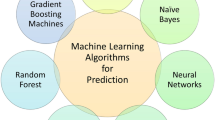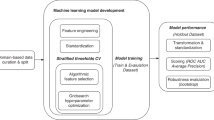Abstract
Asthma is a chronic non-communicable disease that affects the lungs and can cause breathlessness leading to fatal exacerbation. This disease mainly starts developing in childhood and can affect the lungs and lifestyle throughout life. Ignoring asthma at any age can be fatal. Therefore, this disease should be detected as early as possible. So, in this regard, we propose a machine learning model to predict early asthma in children. We simulated the federated learning process to build the model and created four virtual hospitals. We have simulated federated learning to build a global robust model where multiple datasets from the different institutions can take part in the training process, which can be used in various regions of the world for predicting early asthma. We have trained the models using both IID (Independent and Identically Distributed) and non-IID approaches of splitting the dataset. We also checked the performance of the models by measuring the predictive accuracy and AUC (Area Under the Receiver Operating Characteristic Curve) score for test data. We got a predictive accuracy of 91.57% and 93.68% for the IID and non-IID approaches. At the same time, we got the AUC score of 0.895 and 0.918 for the IID approach and non-IID approaches.
Access this chapter
Tax calculation will be finalised at checkout
Purchases are for personal use only
Similar content being viewed by others
References
Asthma: Available at: https://www.who.int/news-room/fact-sheets/detail/asthma. Accessed 2022
Asthma Risk Factors: Available at: https://www.webmd.com/asthma/asthma-risk-factors. Accessed 2022
Chronic respiratory diseases: asthma: Available at: https://www.who.int/news-room/questions-and-answers/item/chronic-respiratory-diseases-asthma. Accessed 2022
ISAAC-The International Study of Asthma and Allergies in Childhood: Available at: http://isaac.auckland.ac.nz/index.html. Accessed 2022
Agarap, A.F.: Deep learning using rectified linear units (ReLU). arXiv preprint arXiv:1803.08375 (2018)
Akbar, W., Wu, W.P., Faheem, M., Saleem, M.A., Golilarz, N.A., Haq, A.U.: Machine learning classifiers for asthma disease prediction: a practical illustration. In: 2019 16th International Computer Conference on Wavelet Active Media Technology and Information Processing, pp. 143–148. IEEE (2019)
Arshad, S.H., et al.: Cohort profile: the Isle of Wight whole population birth cohort (IOWBC). Int. J. Epidemiol. 47(4), 1043–1044i (2018)
Dayan, I., et al.: Federated learning for predicting clinical outcomes in patients with COVID-19. Nat. Med. 27(10), 1735–1743 (2021)
Kingma, D.P., Ba, J.: Adam: a method for stochastic optimization. arXiv preprint arXiv:1412.6980 (2014)
Kothalawala, D.M., et al.: Development of childhood asthma prediction models using machine learning approaches. medRxiv (2021). https://doi.org/10.1101/2021.03.31.21254678
Mali, B., Dhal, S., Das, A.K.: Diagnosis of asthma in children based on symptoms: a machine learning approach. In: TENCON 2021 IEEE Region 10 Conference (TENCON), pp. 782–787. IEEE (2021)
McMahan, B., Moore, E., Ramage, D., Hampson, S., y Arcas, B.A.: Communication-efficient learning of deep networks from decentralized data. In: Artificial Intelligence and Statistics, pp. 1273–1282. PMLR (2017)
Nwankpa, C., Ijomah, W., Gachagan, A., Marshall, S.: Activation functions: comparison of trends in practice and research for deep learning. arXiv preprint arXiv:1811.03378 (2018)
Paszke, A., et al.: PyTorch: an imperative style, high-performance deep learning library. Adv. Neural Inf. Process. Syst. 32 (2019)
Vaid, A., et al.: Federated learning of electronic health records improves mortality prediction in patients hospitalized with COVID-19. medRxiv (2020)
Ziller, A., et al.: PySyft: a library for easy federated learning. In: Rehman, M.H.u., Gaber, M.M. (eds.) Federated Learning Systems. SCI, vol. 965, pp. 111–139. Springer, Cham (2021). https://doi.org/10.1007/978-3-030-70604-3_5
Author information
Authors and Affiliations
Corresponding author
Editor information
Editors and Affiliations
Rights and permissions
Copyright information
© 2022 The Author(s), under exclusive license to Springer Nature Switzerland AG
About this paper
Cite this paper
Mali, B., Singh, P.K. (2022). Towards Simulating a Global Robust Model for Early Asthma Detection. In: Phillipson, F., Eichler, G., Erfurth, C., Fahrnberger, G. (eds) Innovations for Community Services. I4CS 2022. Communications in Computer and Information Science, vol 1585. Springer, Cham. https://doi.org/10.1007/978-3-031-06668-9_18
Download citation
DOI: https://doi.org/10.1007/978-3-031-06668-9_18
Published:
Publisher Name: Springer, Cham
Print ISBN: 978-3-031-06667-2
Online ISBN: 978-3-031-06668-9
eBook Packages: Computer ScienceComputer Science (R0)




